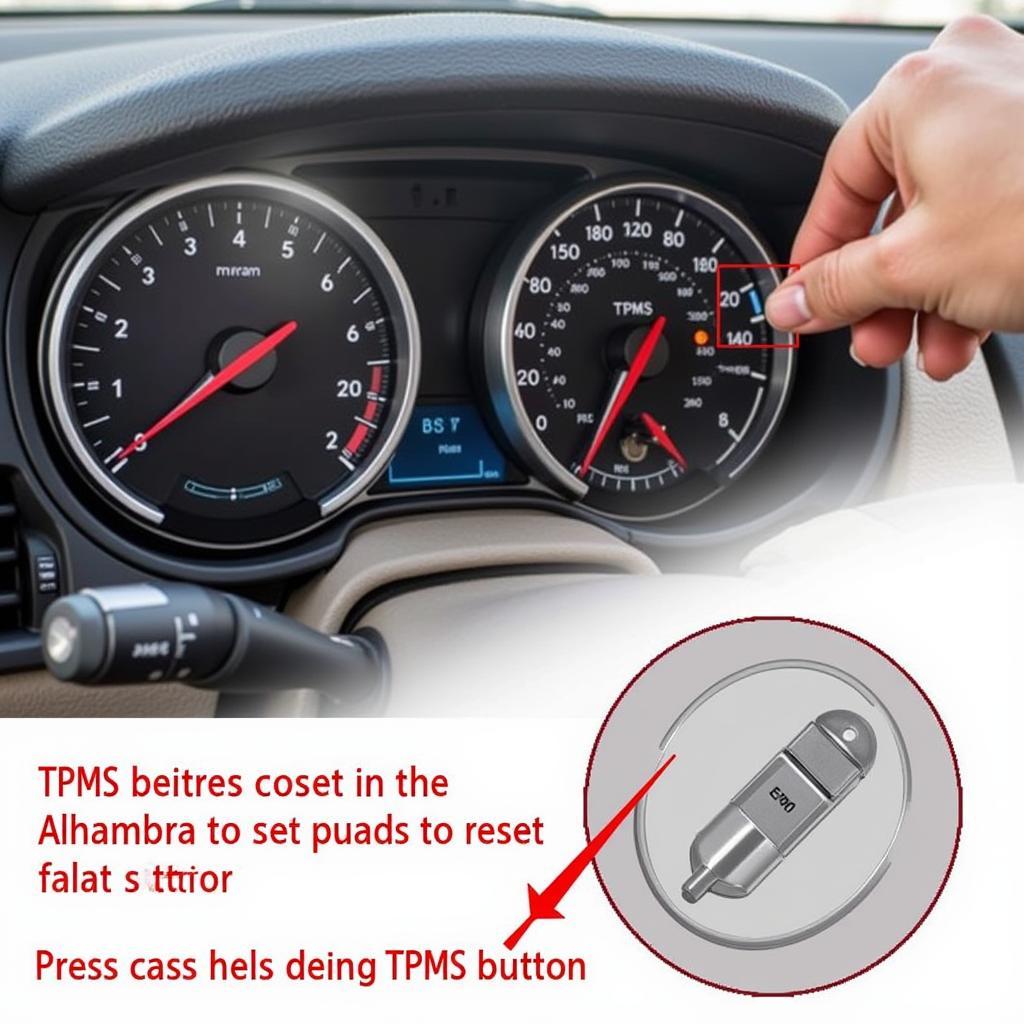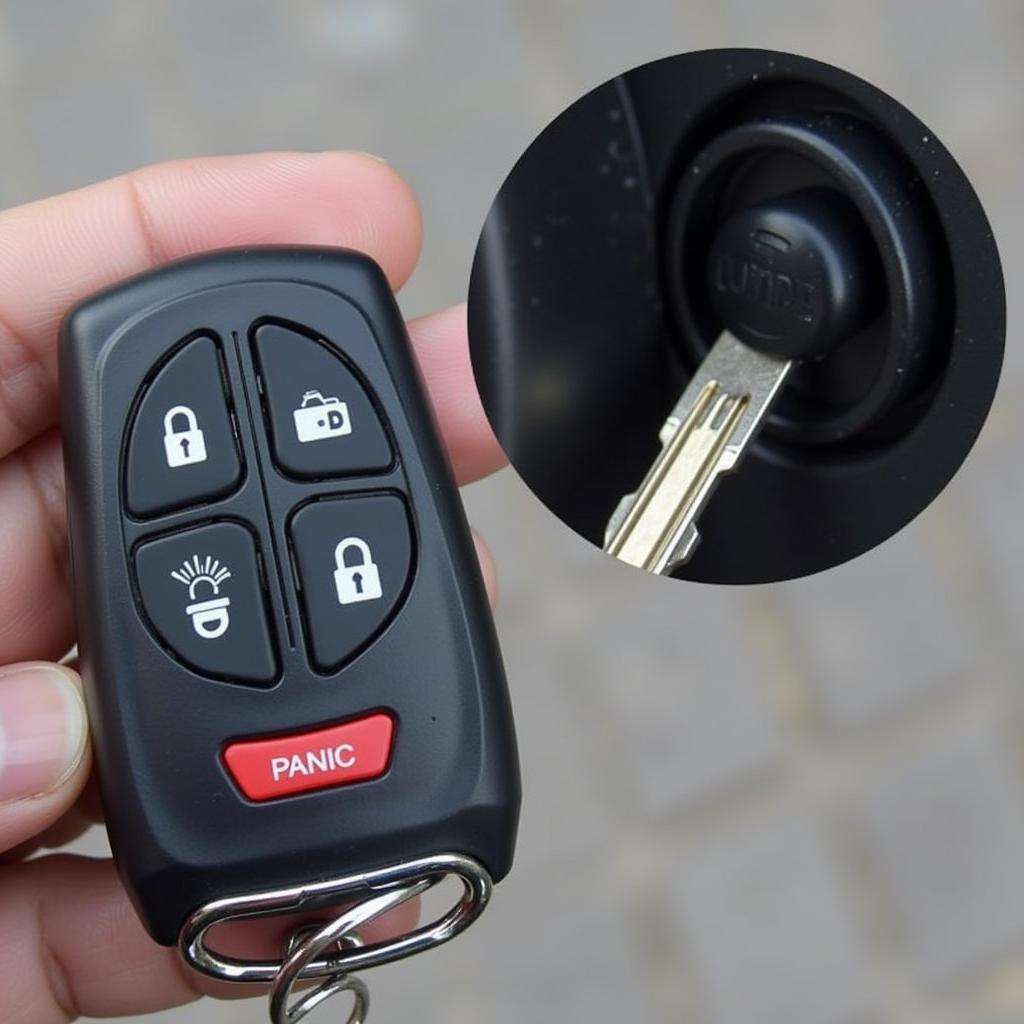The dreaded tyre pressure warning light (TPWL) on your Seat Alhambra dashboard can be a source of anxiety, especially if you’re not sure what triggered it. This comprehensive guide will delve into the common causes of this warning light, explain how to diagnose the problem, and provide step-by-step instructions on how to reset it.
Understanding the Tyre Pressure Warning Light System
Your Seat Alhambra is equipped with a Tyre Pressure Monitoring System (TPMS), a safety feature designed to alert you to underinflated tyres. The TPMS utilizes sensors located within each wheel to constantly monitor tyre pressure. When the pressure in one or more tyres drops below a predetermined threshold, the TPWL on your dashboard illuminates.
Why is My Seat Alhambra Tyre Pressure Warning Light On?
There are several reasons why your TPWL might be activated:
- Underinflation: The most common culprit is simply underinflated tyres. Check your tyre pressure using a reliable gauge and inflate them to the recommended PSI (pounds per square inch) specified in your Seat Alhambra’s owner’s manual or on the sticker located inside the driver’s side door jamb.
- Puncture or Slow Leak: A slow leak or puncture can cause a gradual decrease in tyre pressure, triggering the TPWL.
- Faulty Tyre Pressure Sensor: Over time, the TPMS sensors can malfunction due to battery depletion, damage, or corrosion, resulting in inaccurate readings.
- Change in Temperature: Significant temperature fluctuations, especially during seasonal changes, can affect tyre pressure and activate the TPWL.
- Recent Tyre Change: If you’ve recently had your tyres changed or rotated, it’s crucial to ensure the TPMS sensors were properly reset.
Diagnosing the Tyre Pressure Warning Light
- Check Your Tyre Pressure: As a first step, inspect all four tyres for visible signs of underinflation, punctures, or damage. Use a tyre pressure gauge to verify the pressure in each tyre, comparing it to the recommended PSI.
- Inspect for Leaks: If you suspect a puncture or slow leak, carefully examine the tyre tread and sidewalls for any nails, screws, or other sharp objects. Spraying soapy water on the tyre surface can help identify leaks as escaping air will create bubbles.
- Consult a Professional: If you cannot identify the cause of the TPWL or suspect a faulty TPMS sensor, it’s best to seek assistance from a qualified mechanic specializing in Seat vehicles. They have the necessary diagnostic tools to pinpoint the issue and recommend the appropriate solution.
Resetting the Tyre Pressure Warning Light
Once you’ve addressed the underlying issue causing the TPWL to illuminate, you’ll need to reset the system. Here’s a general guide, but always consult your owner’s manual for model-specific instructions:
- Turn the ignition on: Start by turning the ignition key to the “on” position without starting the engine.
- Locate the TPMS reset button: This button is usually situated on the center console, near the gear shifter, or on the steering column.
- Press and hold the reset button: Press and hold the TPMS reset button until the TPWL blinks a few times and then turns off. This may take a few seconds.
- Drive your car: Drive your Seat Alhambra for a short distance (usually 5-10 minutes) at moderate speed. This allows the TPMS sensors to recalibrate and gather accurate readings.
 Resetting the TPMS on a Seat Alhambra
Resetting the TPMS on a Seat Alhambra
FAQs about Seat Alhambra Tyre Pressure Warning Light
Q1: Can I drive with the TPWL on?
While it’s technically possible to drive with the TPWL illuminated, it’s highly discouraged. Driving on underinflated tyres compromises your vehicle’s handling, fuel efficiency, and significantly increases the risk of a blowout.
Q2: How often should I check my tyre pressure?
It’s recommended to check your tyre pressure at least once a month and before long road trips.
Q3: Do I need to replace all four tyres if the TPWL comes on?
Not necessarily. The TPWL indicates low pressure in one or more tyres. You might only need to address the affected tyre(s).
Q4: How long do Seat Alhambra TPMS sensors last?
TPMS sensors typically last between 5-7 years, depending on driving conditions and usage.
Q5: Can I replace the TPMS sensors myself?
While it’s technically possible, replacing TPMS sensors requires specific tools and expertise. It’s advisable to have them replaced by a qualified mechanic.
Conclusion
The tyre pressure warning light on your Seat Alhambra serves as a crucial safety feature, alerting you to potential issues with your tyres. By understanding its causes, taking prompt action to diagnose the problem, and knowing how to reset the system, you can ensure optimal tyre performance, enhance safety, and extend the lifespan of your tyres. Remember, regular tyre maintenance, including pressure checks and visual inspections, is key to safe and enjoyable driving experience.



